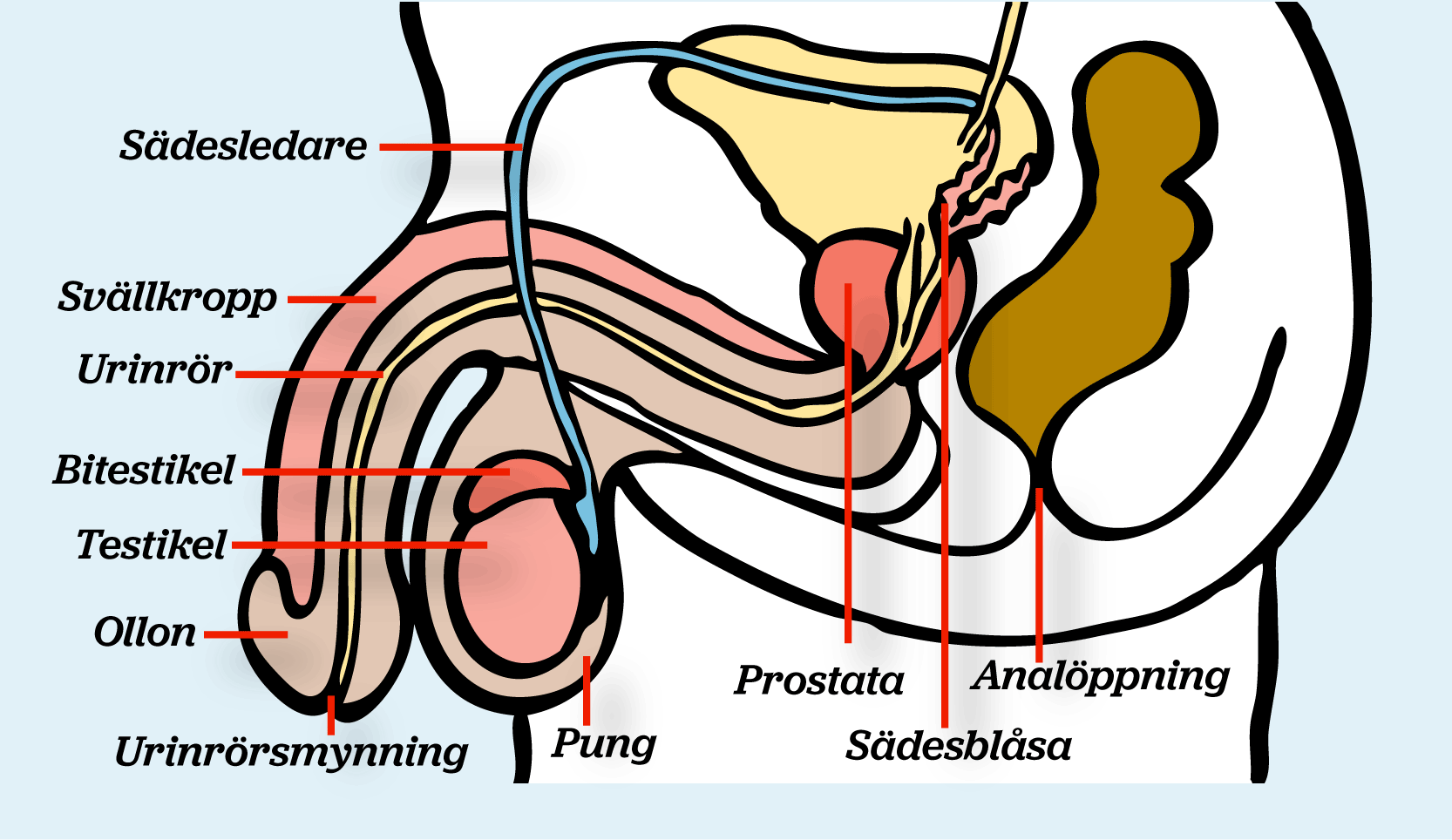Explanation of the different parts of the penis
 |
| different parts of the penis |
The penis is the external male sexual and urination organ. It is made up of three columns of erectile tissue and it relies solely on engorgement with blood to reach its erect state during sex.
The erectile tissues are called "corpus spongiosum" and "corpus cavernosum". The "corpus spongiosum" lies on the underside of the penis, while the two "corpora cavernosa" columns lie next to each other on the upper side. The end of the corpus spongiosum is enlarged and cone-shaped and forms the glans penis. The glans supports the foreskin (or prepuce), which is a loose fold of skin that in adults can retract to expose the glans. The area on the underside of the penis, where the foreskin is attached, is called the frenum.
The urethra, which is the last part of the urinary tract, traverses the "corpus spongiosum" and its opening, known as the "meatus", lies on the tip of the glans penis. It is both a passage for urine and for the ejaculation of semen. Sperm is produced in the testes and stored in the attached epididymis.
During ejaculation, sperm is propelled up the vas deferens, two ducts that pass over and behind the bladder. Fluids are added by the seminal vesicles and the vas deferens turns into the ejaculatory ducts, which join the urethra inside the prostate gland. The prostate and the bulbourethral glands add further secretions, and the resulting semen is expelled through the penis.
The final feature of the penis is the raphe, which is the visible ridge between the lateral halves of the penis, found on the underside of the penis, running from the meatus (opening of the urethra) across the scrotum to the perineum (area between scrotum and anus).
Explanation of the different parts of the penis
![Explanation of the different parts of the penis]() Reviewed by James
on
May 04, 2020
Rating:
Reviewed by James
on
May 04, 2020
Rating:



